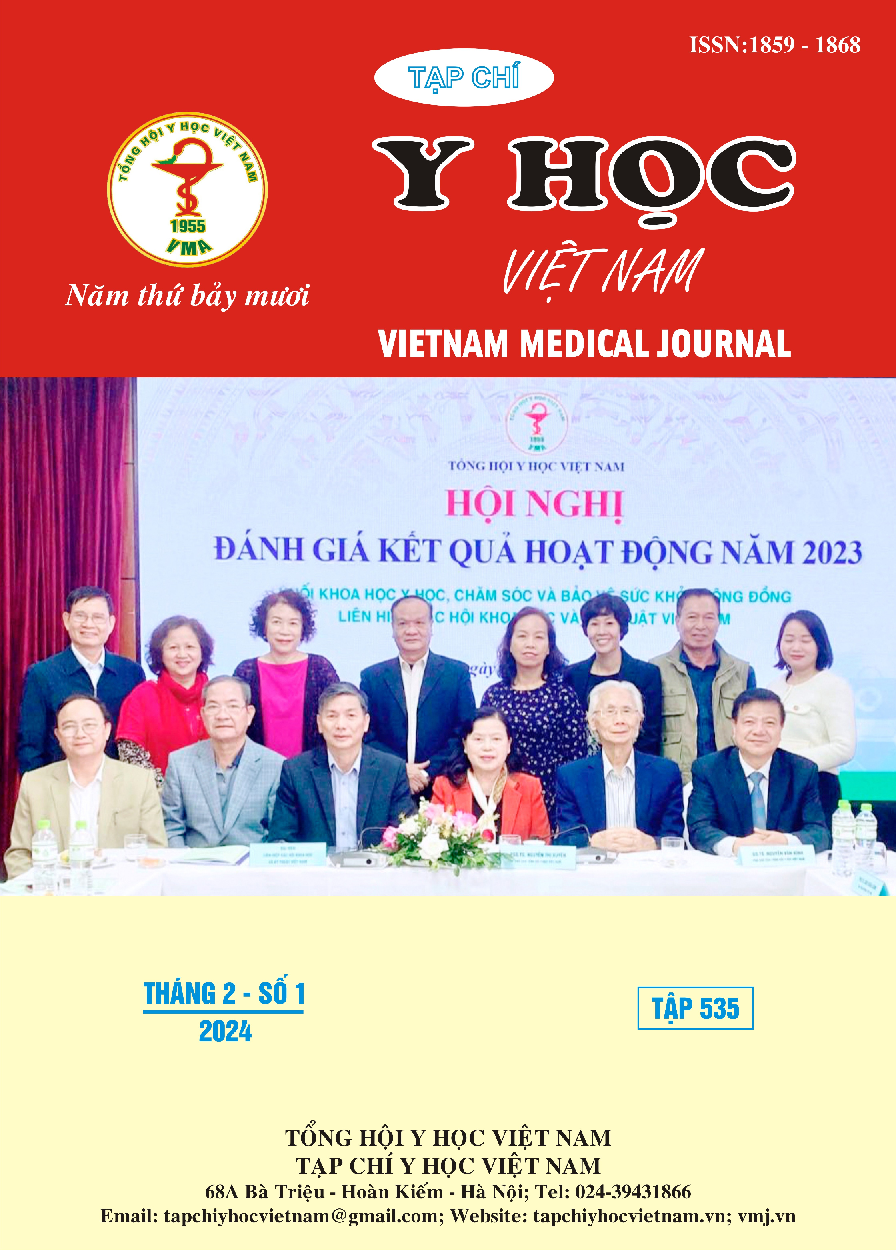LIỆU PHÁP NHŨ TƯƠNG LIPID 20% ĐƯỜNG TĨNH MẠCH TRONG ĐIỀU TRỊ NGỘ ĐỘC CẤP
Nội dung chính của bài viết
Tóm tắt
Mục tiêu: Nhận xét việc sử dụng liệu pháp nhũ tương lipid 20% đường tĩnh mạch (ILE) trong điều trị ngộ độc cấp. Đối tượng và phương pháp: nghiên cứu mô tả trên 34 bệnh nhân ngộ độc cấp có sử dụng ILE từ 01/2022 đến 8/2023 tại Trung tâm Chống độc Bệnh viện Bạch Mai. Kết quả: ILE được chỉ định cho các nhóm ngộ độc là thuốc gây tê, chẹn kênh canxi, chống trầm cảm và hoá chất bảo vệ thực vật; mức độ PSS trung bình 29,4%, nặng 67,6%, nguy kịch 2,9%. Chỉ định dùng ILE chủ yếu là tụt huyết áp (38,2%), rối loạn ý thức (29,4%), ngừng tim 2,9%. 67,6% ILE được dùng kết hợp ngay cùng với các điều trị khác, 26,5% điều trị cứu vãn. 52,9% ILE dùng liều đúng phác đồ. Kết luận: Nghiên cứu cho thấy thực trạng sử dụng liệu pháp nhũ tương lipid 20% đường tĩnh mạch trong điều trị bệnh nhân ngộ độc cấp tại Trung tâm Chống độc Bệnh viện Bạch Mai.
Chi tiết bài viết
Tài liệu tham khảo
2. Rosenblatt, M.A., et al., Successful use of a 20% lipid emulsion to resuscitate a patient after a presumed bupivacaine-related cardiac arrest. The Journal of the American Society of Anesthesiologists, 2006. 105(1): p. 217-218.
3. Litz, R., et al., Successful resuscitation of a patient with ropivacaine‐induced asystole after axillary plexus block using lipid infusion. Anaesthesia, 2006. 61(8): p. 800-801.
4. Forsberg, M., et al., No support for lipid rescue in oral poisoning: A systematic review and analysis of 160 published cases. Human & Experimental Toxicology, 2017. 36(5): p. 461-466.
5. Smolinske, S., et al., Utilization of lipid emulsion therapy in fatal overdose cases: an observational study. Clinical Toxicology, 2019. 57(3): p. 197-202.
6. Türkdoğan, A.K., et al., Lipid Emulsion Therapy in Lipophilic or Hydrophilic Drug Intoxication: The Last Weapon in Our Arsenal. Eurasian Journal of Emergency Medicine, 2019. 18(2): p. 90-94.
7. Gitman, M. and M.J. Barrington, Local anesthetic systemic toxicity: a review of recent case reports and registries. Regional anesthesia & pain medicine, 2018. 43(2): p. 124-130.
8. Basiouny, S., et al., Intravenous lipid emulsion as an adjuvant therapy of acute antipsychotic poisoning: a randomized controlled trial. Ain Shams Journal of Forensic Medicine and Clinical Toxicology, 2022. 38(1): p. 19-32.
9. Mithani, S., et al., A cohort study of unstable overdose patients treated with intravenous lipid emulsion therapy. Canadian Journal of Emergency Medicine, 2017. 19(4): p. 256-264.
10. Cave, G., et al., LIPAEMIC report: results of clinical use of intravenous lipid emulsion in drug toxicity reported to an online lipid registry. Journal of Medical Toxicology, 2014. 10: p. 133-142.


